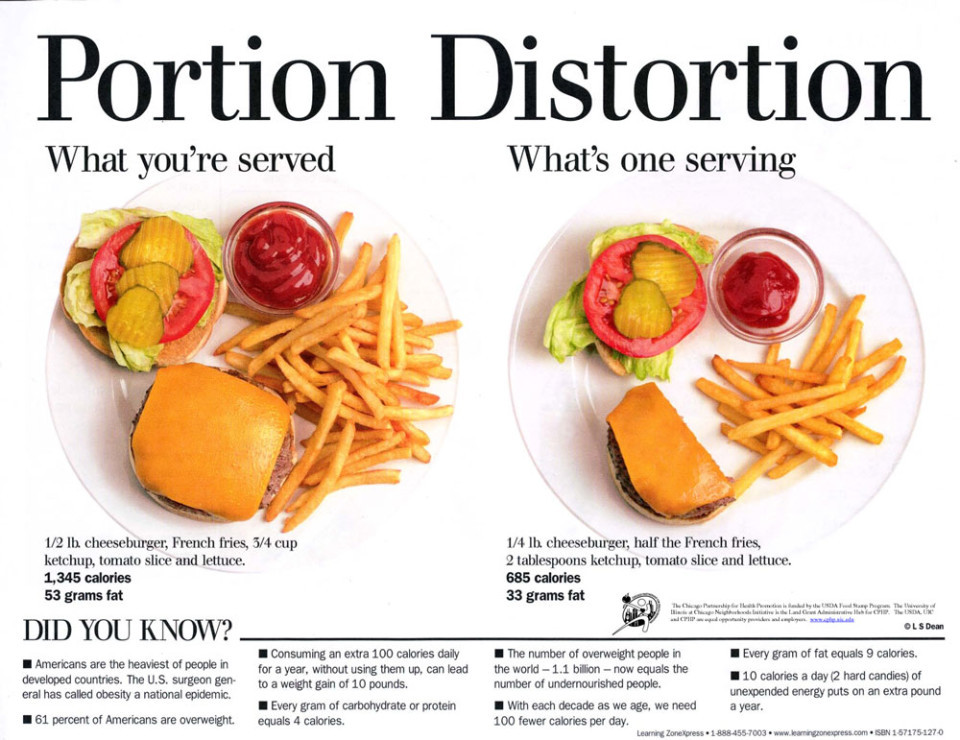Have you ever been served a meal at a restaurant and been in shock by the amount of food delivered to your table? You’re not alone. Over the past 40 years, portion sizes have continued to grow exponentially.
The increase in portion sizes is known as portion distortion. “Portion distortion” describes how portion sizes have become larger over time. What we now consider to be a “normal” portion may actually be a portion size large enough to be equivalent to two or three serving sizes.
The National Heart, Lung, and Blood Institute (NHLBI) offers a great example of how portion distortion has occurred over time.
| Comparison of Portions and Calories 20 Years Ago to Present Day | ||||
| 20 Years Ago | Today | |||
| Portion | Calories | Portion | Calories | |
| Bagel | 3” diameter | 140 | 6” diameter | 350 |
| Cheeseburger | 1 | 333 | 1 | 590 |
| Spaghetti w/meatballs |
1 cup sauce 3 small meatballs |
500 | 2 cups sauce 3 large meatballs |
1,020 |
| Soda | 6.5 ounces | 82 | 20 ounces | 250 |
| Blueberry muffin |
1.5 ounces | 210 | 5 ounces | 500 |
The discrepancy between serving size and portion size has contributed to this portion distortion. By definition, a serving size is a specific amount of food or drink that is defined by common measurements recommended by food experts. A portion size is the amount of food that ends up on the plate; it’s the amount of food you choose to eat. Most people are simply eating too much food and giving their bodies too much to deal with, resulting in weight gain.
Supersized portions have become the norm in our society. Unfortunately, the supersized portions common in restaurants have carried over to the portions we make for ourselves in the home.

The increase in portion sizes has contributed to the increased prevalence of overweight and obesity in the United States. According to the NHLBI, “in the 1970s, around 47 percent of Americans were overweight or obese; now 66 percent of us are. In addition, the number of just obese people has doubled, from 15 percent of our population to 30 percent.” Nutritionist Lisa Young states, “Americans have grown proportionally to increased portion sizes.” Young also recommends that rather than cutting carbs, fats, or proteins, we should “smartsize” our portions and use visual images to be aware of how much we’re eating.
Nutritionist Kimberly Snyder offers suggestions for reducing or controlling your portion size.
- Serve your meal on a smaller plate.
- Start your meal with veggies or a salad; starting a meal off this way will naturally help control the portion size of the foods you eat after.
- Measure your foods to ensure portion accuracy.
- Package your food in portion sized containers.
- When eating out, portion out the “correct” portion and ask for the rest to be placed in a container to take home with you.
- Create visual cues that will help you estimate the correct portion size.
Original post.
Advertisements Share this:




